










The earliest documented record of Droxford is in 826 when Egbert, King of Wessex and for a short period conqueror of Mercia, granted the Manor of Drocenesforda to St Swithun’s Priory, the old monastery in Winchester.
In those days England was divided into areas called manors. It was usual practice to gift such manorial lands to the church as a source of income and influence.
Egbert’s royal charter set out the manor boundary, embracing today’s parishes of Droxford, Swanmore and Shedfield.
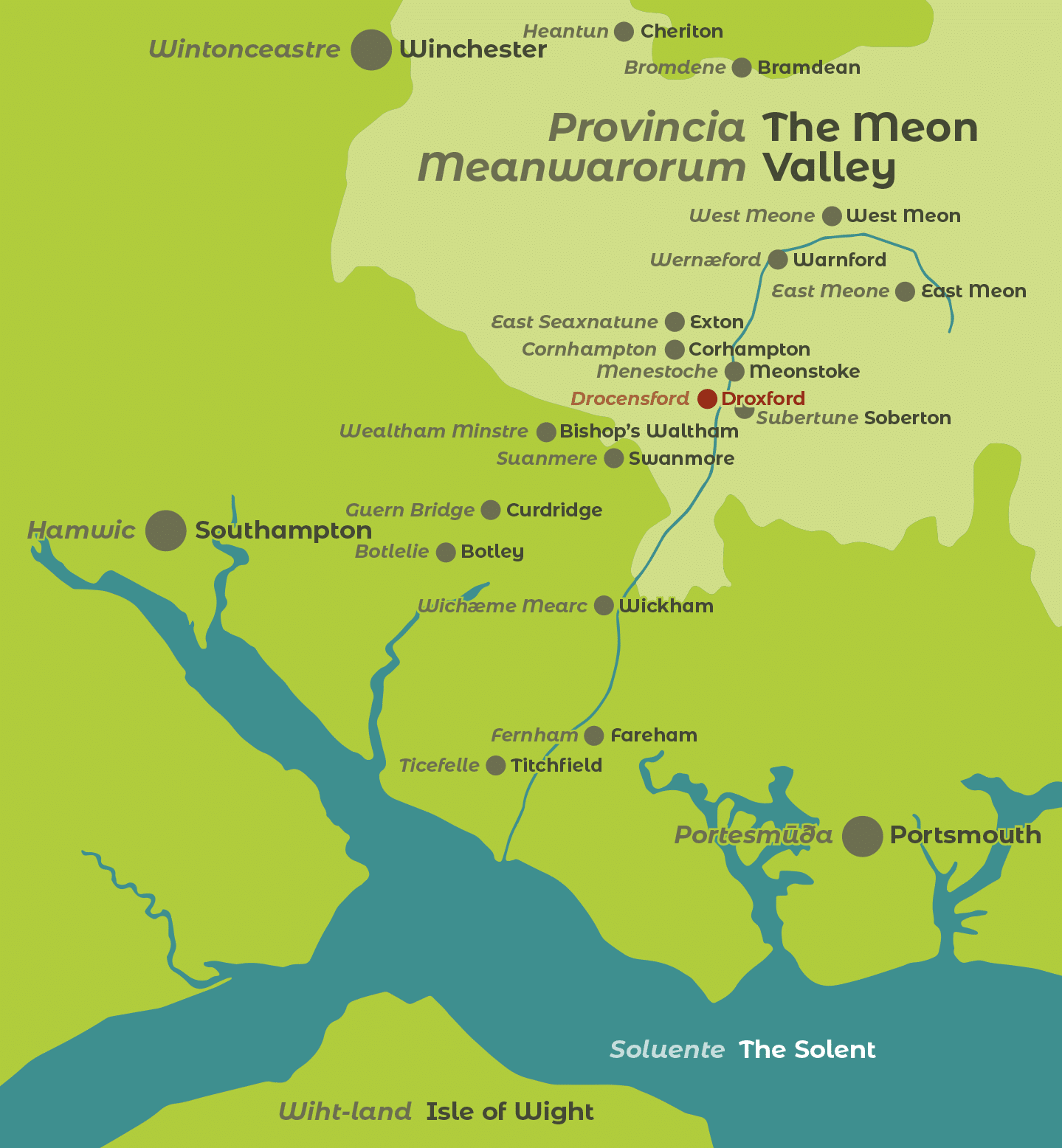
© Saxons in the Meon Valley 2013
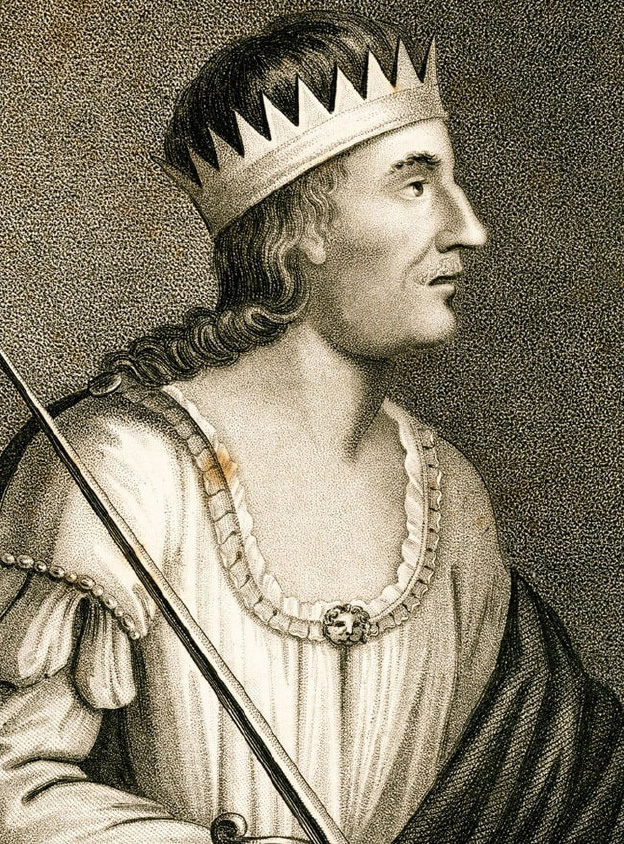
Image by kind permission of All Saints Church Kingston-on-Thames
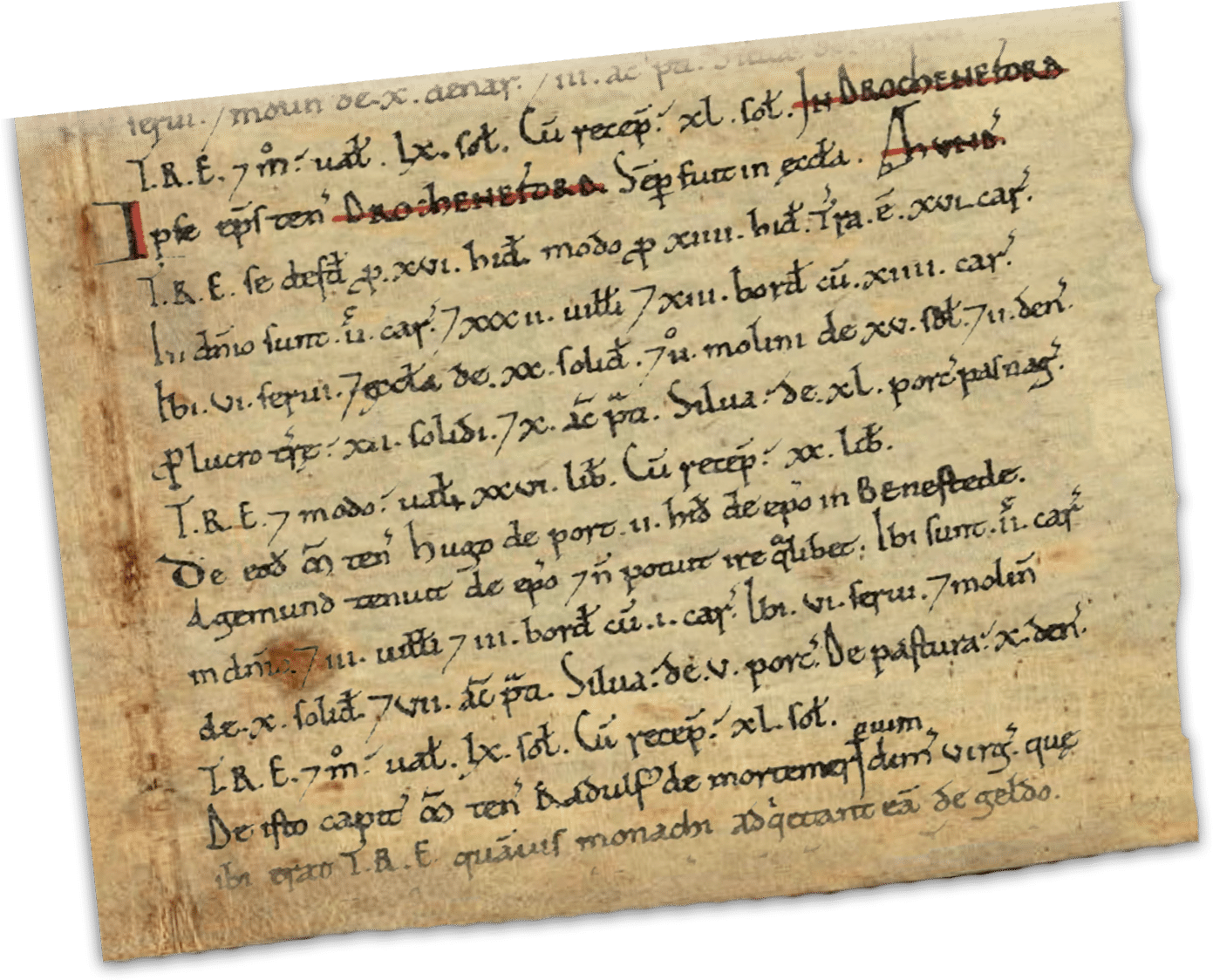
© Professor John Palmer, George Slater, opendomesday.org
The Domesday Book, great survey of England in 1086 by the conquering Normans, described the Manor of Drochenesford in some detail. About 250 people dwelt here, a typically sized rural settlement of that period. The manor was valued at £26 overall.
This was rich agricultural land, including areas of meadow, cultivated fields and woodland suitable for 40 pigs. Two mills ground grain into flour for bread making.
Domesday also suggests that a Saxon church may have existed then, perhaps built by the monks of St Swithun’s.
For more on Domesday Droxford go to www.opendomesday.org
By the 12th century Droxford was established as the focal point of an agricultural community. This church was built circa 1150, a sign of the village’s growing importance. The rounded arches of the doorways and chancel are original Norman features.
As with other manors in the area, ownership of Droxford passed to the Bishop of Winchester, reflecting the increasing power of the city and its cathedral church.
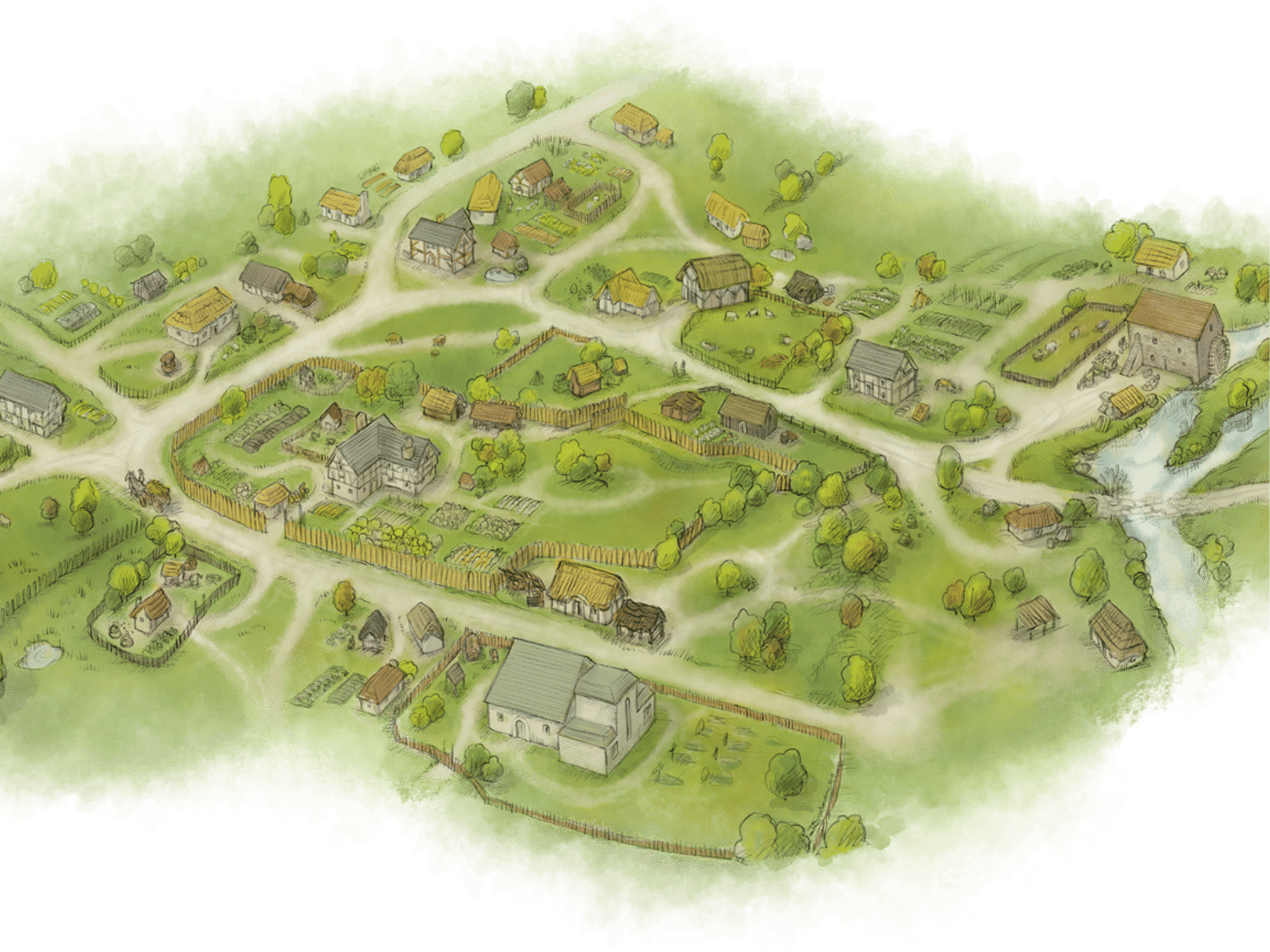
Illustration by David Goodman
John of Drokenesford was rector of this church and Medieval Droxford’s most famous son. Born into a family of royal servants, by 1300 he had become Keeper of the King’s Wardrobe, one of the closest aides to Edward I. Later he was appointed Bishop of Bath and Wells by Edward II.
John’s magnificent tomb for his parents in this church was smashed by 17th century Puritans. However, a marble sculpture found later in a nearby ditch is believed to be from the tomb. This apparent effigy of his mother Agnes was restored as the fine figure that lies in the Lady Chapel today.
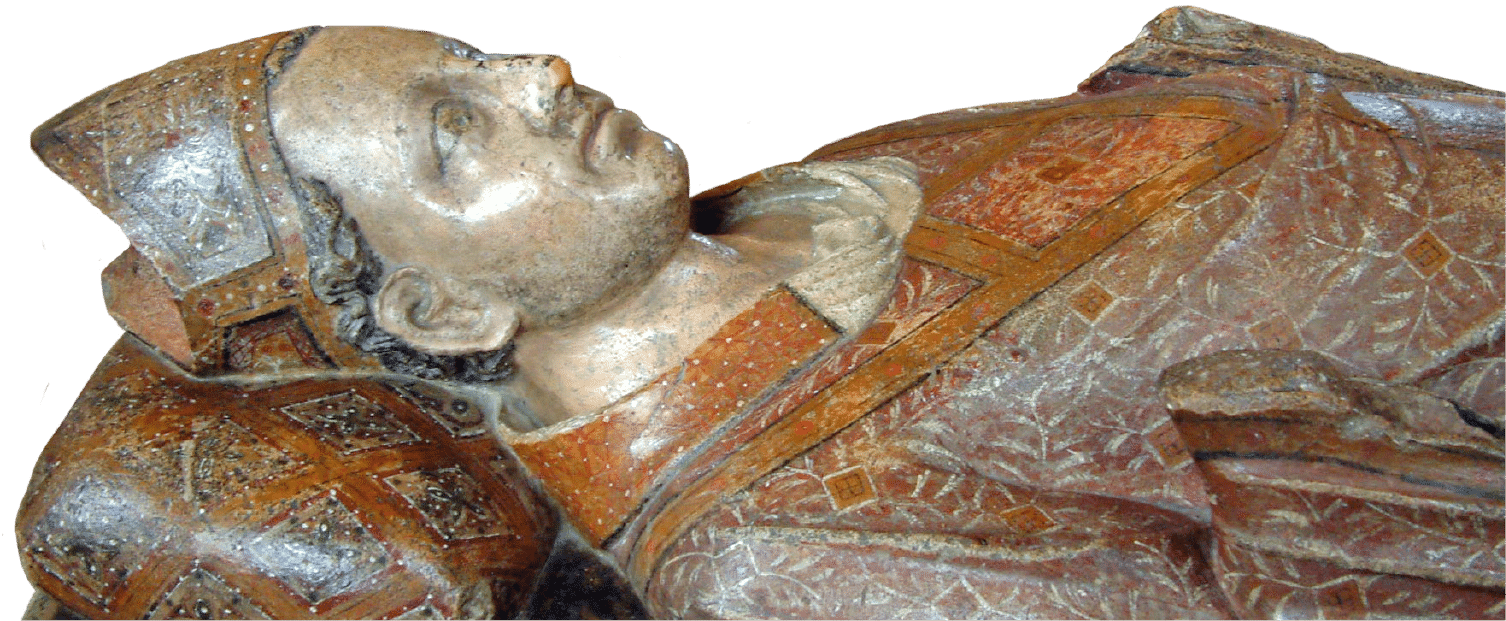
Photograph by Michael Blandford. Reproduced by kind permission of the Dean and Chapter of Wells Cathedral.
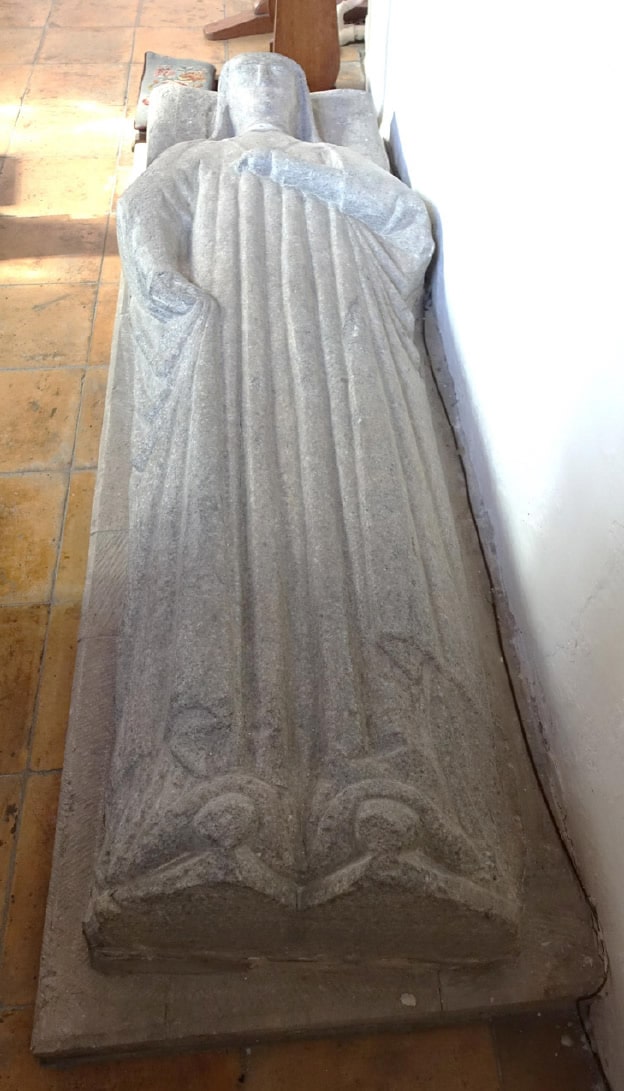
Photograph by Ivor Coleman
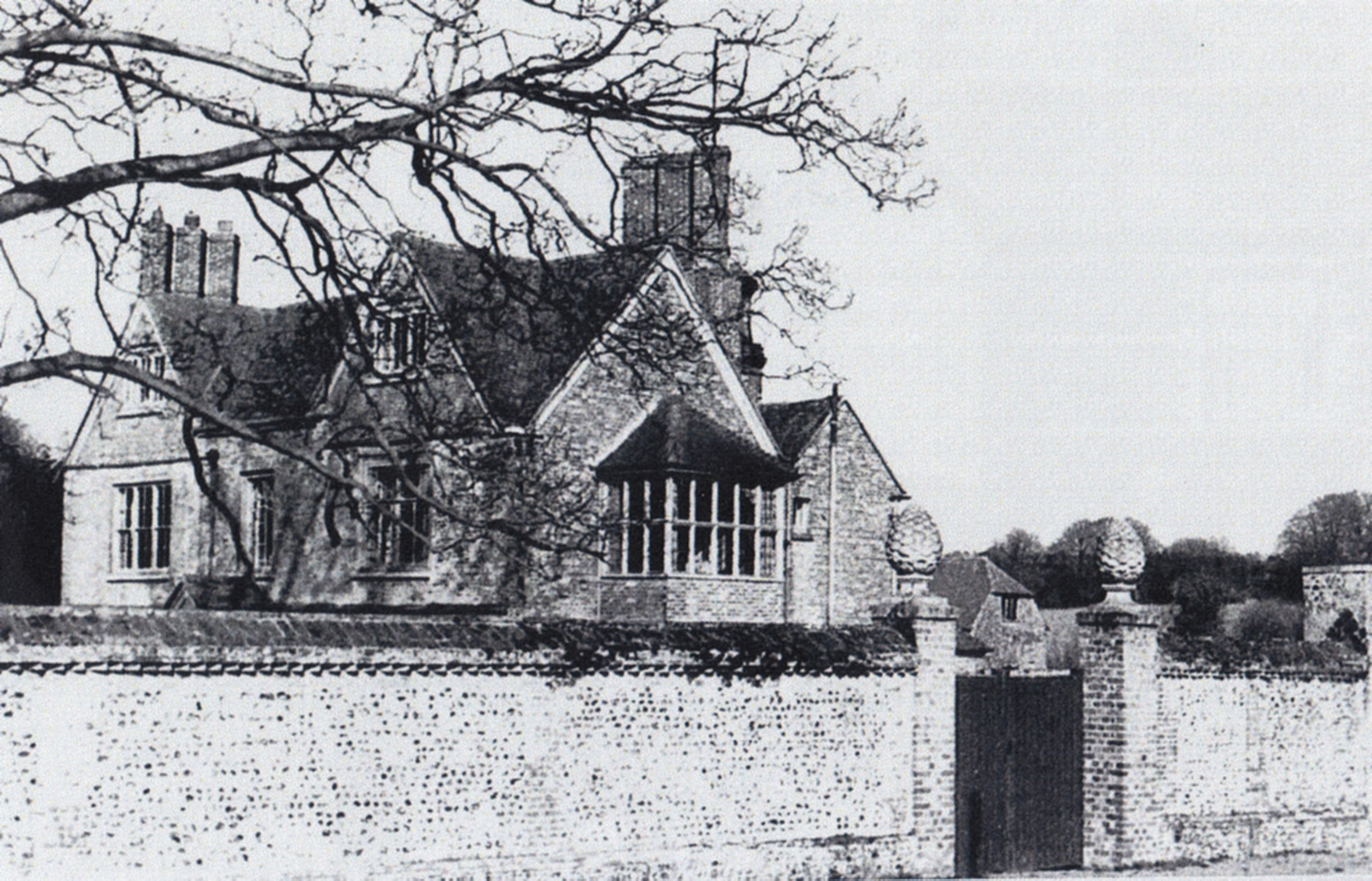
There has been a Manor House next to Droxford Church since Norman times. Today’s house is a private residence, dating from the 16th century. Droxford’s Court was held here at the “Turns” of Hock (Easter) and St Martin (autumn), when local tenants came to renew homage to the Lord of the Manor. The court dealt with multifarious matters:
1672 – Unringed hogs found “in anye of our Commons” were to be impounded and a charge of 4d made for each one released;
1680 – “Widdow Horner and her son John” were presented “for annoying ye sone of John Clewer Senior by Digin Chawk” and fined 4d.
The Manor of Droxford remained in the almost unbroken ownership of the Diocese of Winchester until the 19th century. The main exception was during the Civil War, when parliament seized assets from the church across England. In 1647 Droxford was sold for £7,675 to Francis Allen. The manor was restored to the bishop on the Restoration of the monarchy in 1660.
Droxford was a farming community with a well-defined structure. The gentry were identified by their lineage or income. Yeoman farmers ran substantial farms that yielded produce for sale as well as to live on. Husbandmen were subsistence armers who owned a cottage and a small amount of land. At the bottom of the pile was the farm labourer with few assets and little income.
Since Saxon times, a variety of farming had taken place here. Sheep grazed the downland. Wheat and other cereal crops were prevalent on the deeper, richer valley soils. Pigs were held in woodland. Cattle, chickens, goats and geese were kept close to home.
Cabbages, peas, parsnips and carrots were commonly grown vegetables. Blackberries, apples and raspberries were popular fruits.
You can find more about Meon Valley farming through the ages at the History website for nearby East Meon: www.eastmeonhistory.net
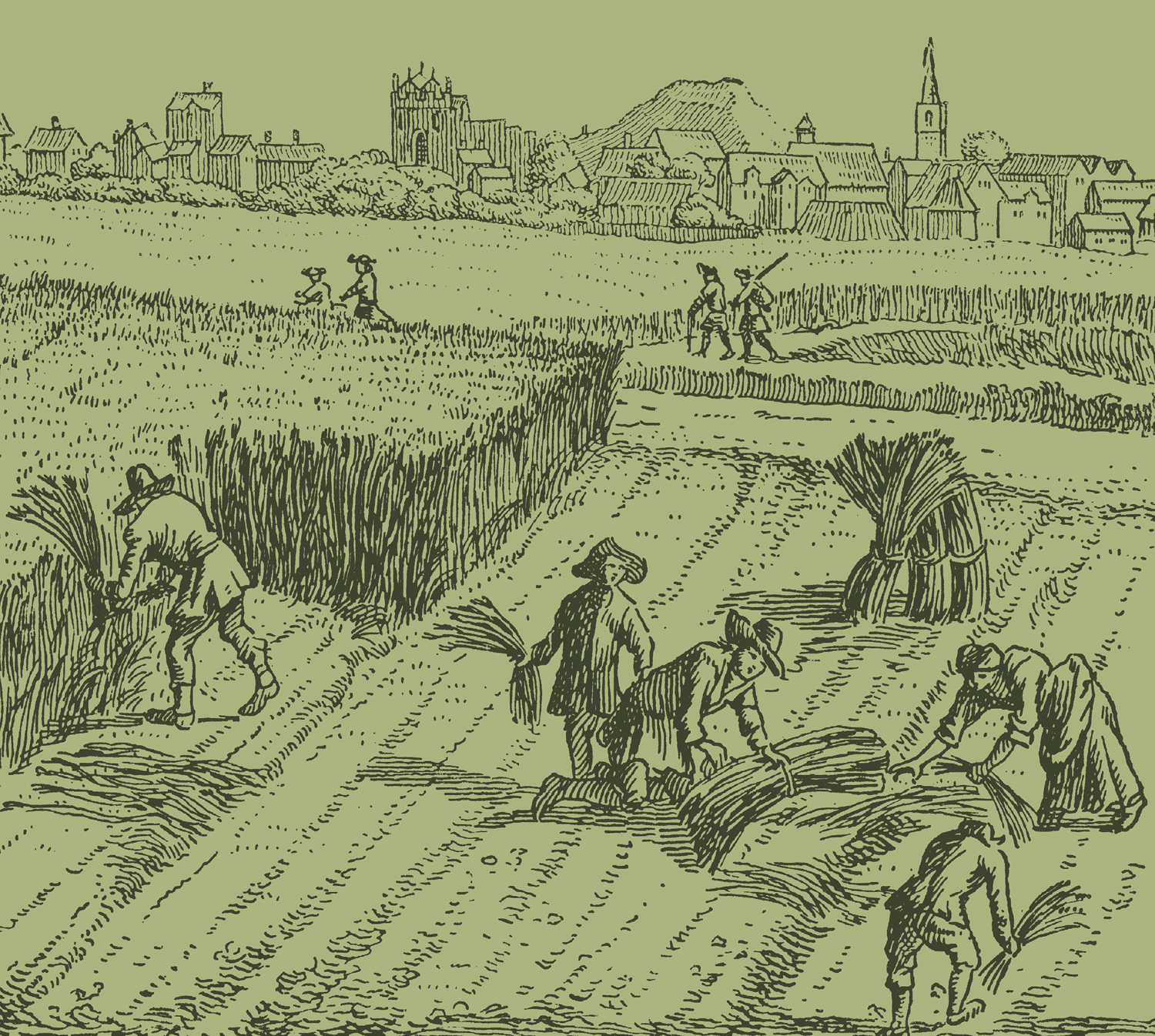
Alamy Stock Photo
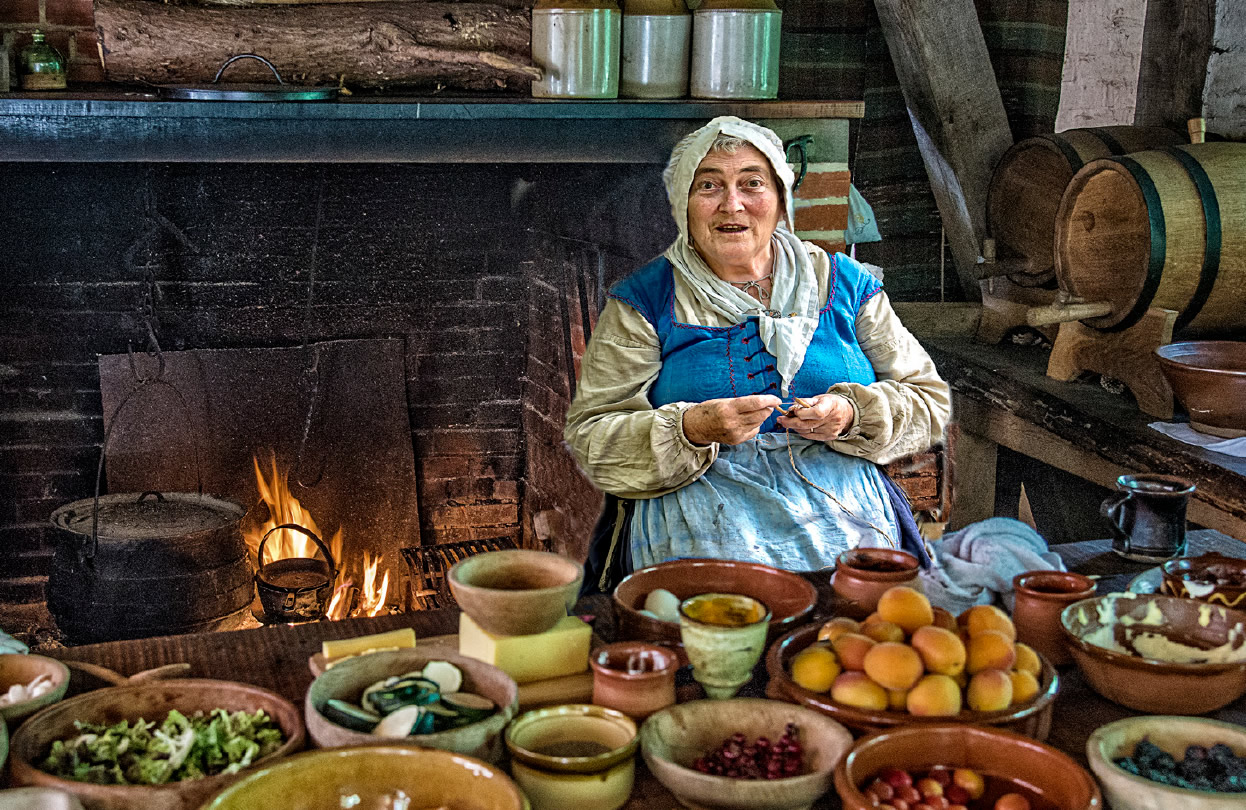
Reproduced by kind permission of Little Woodham Living History Village, Gosport
Under the manorial system, land was rented from the diocese, often paid for with produce or labour. Residents paid taxes on their household. Records from the 1660s for the “hearth tax”, levied on the number of fireplaces, give an insight into life in Droxford.
There were 38 households, a population of perhaps 200 people. Ten households were exempt from the tax as they were too poor. Seven were charged for a single fireplace. One of the gentry had to pay up for all 15 of his mansion‘s hearths.
The Hearth Tax of 1664 indicates that a house owned by Edward Strugnell had burned down. By 1694 he was the recorded owner of its replacement. That house still stands in Droxford, now a row of four Tudor cottages, the result of 20th century conversion.
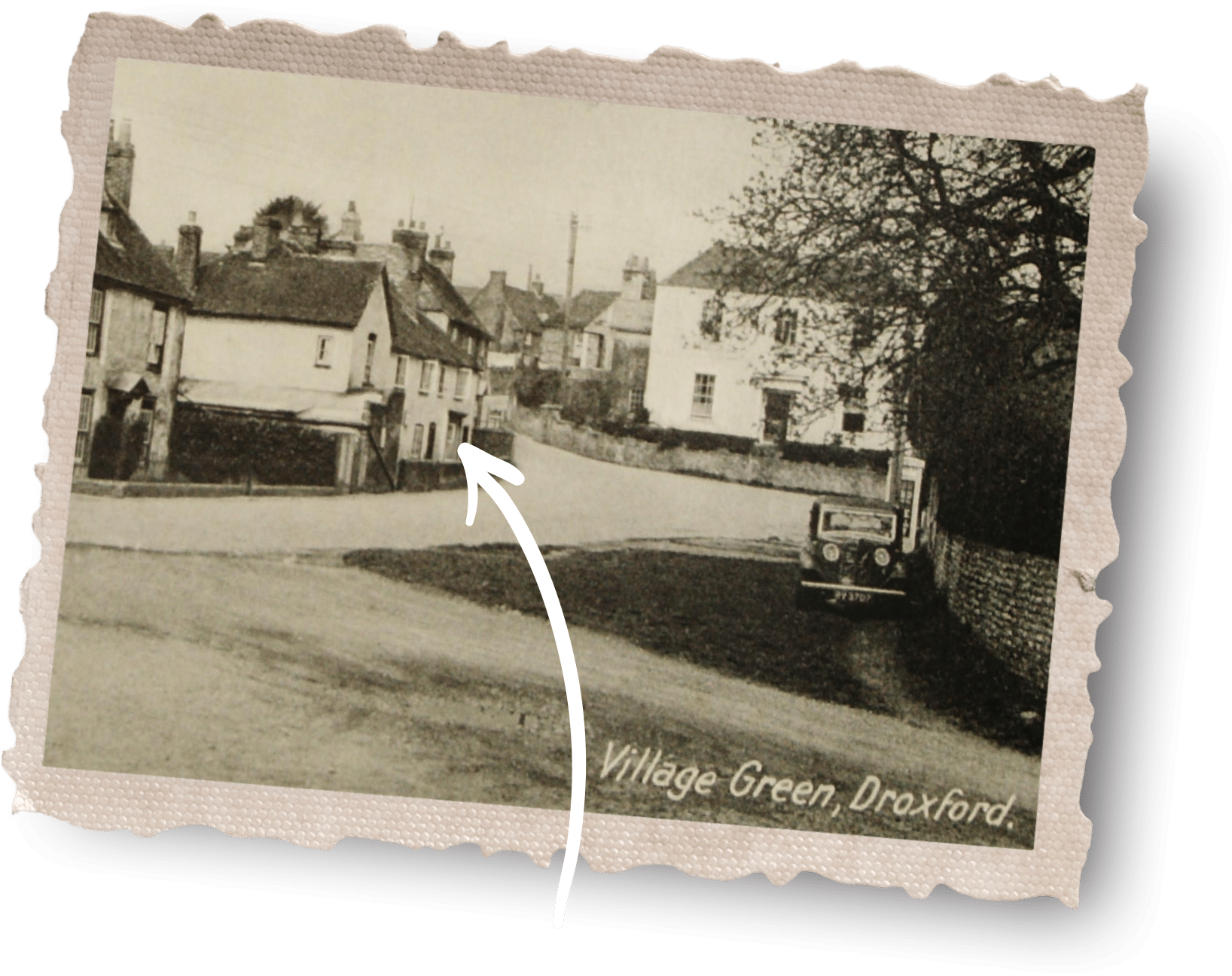
In 1676 William Hawkins, Rector of Droxford Church, married Anne Walton. Her father was Izaak Walton, famous son of Hampshire and perhaps Britain’s best known fisherman. His book, The Compleat Angler, is said to be the most reprinted book in the English language after The Bible.
In Walton’s view “God did never make a more calm, quiet, innocent recreation than angling”. In the charming chalk stream of the Meon, he found an ideal home for his lifelong passion. Walton spent his latter years here, living with his daughter and son-in-law in Droxford Rectory.
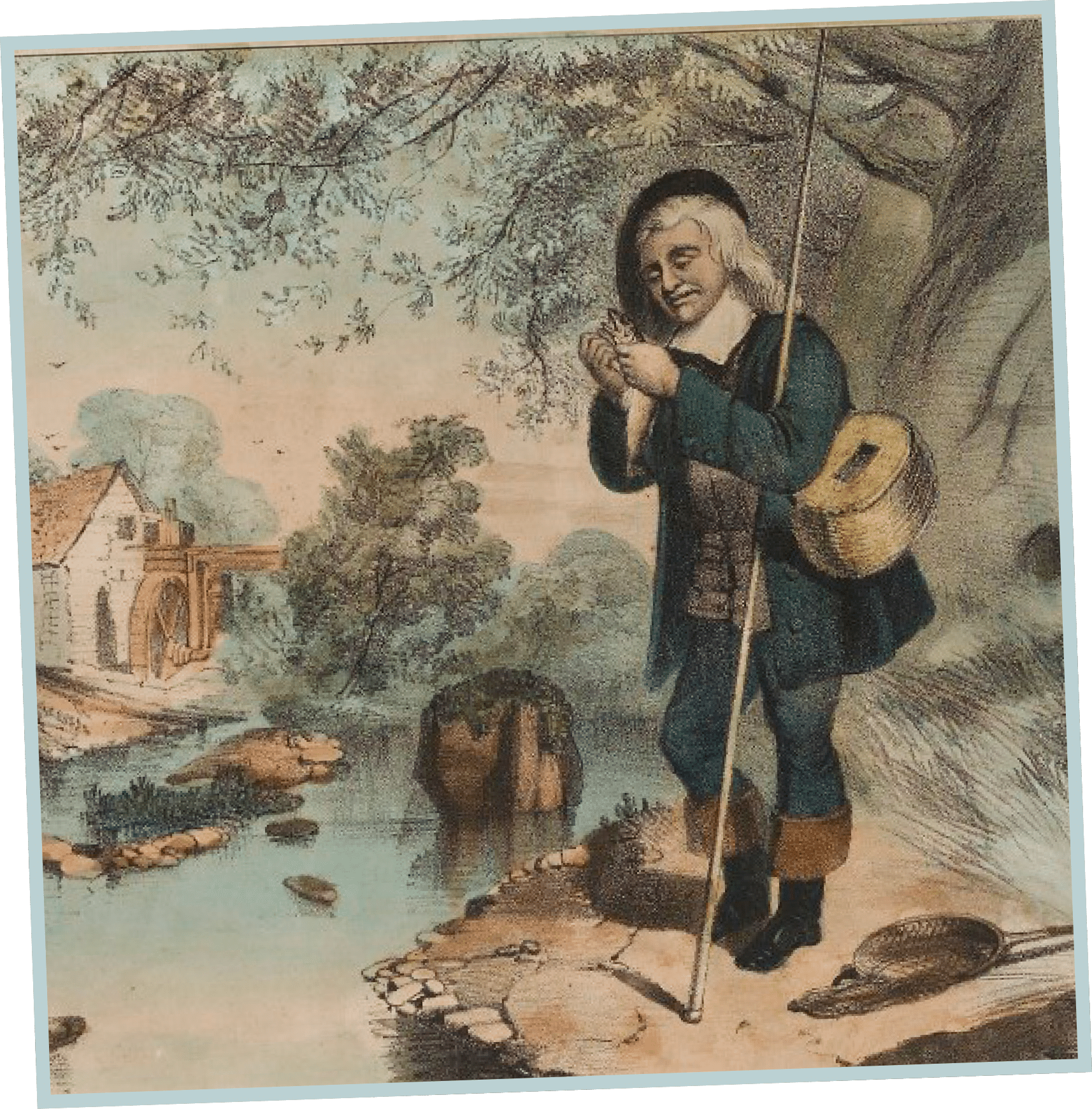
© National Portrait Gallery, London. Creative Commons
Written by Ivor Coleman, Designed by David Goodman